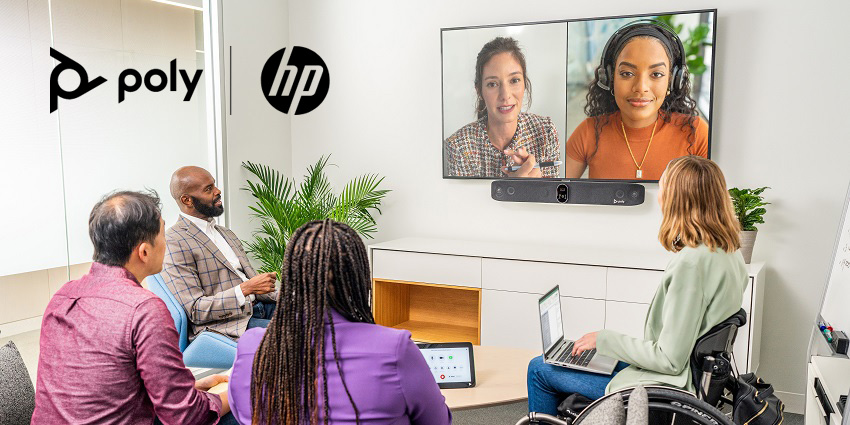Are you uncertain about how to end a video call? Or perhaps you don’t know the best way of telling someone to mute their microphone.
Well, now you can find the answers thanks to Poly and Debrett’s, the renowned authority on modern etiquette.
The two organisations have partnered to create a guide for global etiquette in the hybrid workplace.
The comprehensive guide gives insight into how to behave during video calls, body language, virtual backgrounds, and more.
Liz Wyse, Etiquette Advisor at Debrett’s, said: “With people increasingly splitting their time between the office and home, how we conduct ourselves at work has changed drastically.
“It’s clear that hybrid working offers many benefits, including greater flexibility and a better work-life balance. However, that’s not an excuse to let etiquette slip, and standards should stay the same regardless of where you’re working from.”
The pandemic caused a forced shift to a remote working environment which has since transformed into a hybrid setting as Covid restrictions eased worldwide.
For many employees, it would have been the first time they worked from home and, due to this, their workplace behaviours changed.
Sof Socratous, Head of Northwest Europe Sales, Hybrid Work Solutions, Poly|HP, commented: “The shift to hybrid work was so abrupt, we’ve not really taken stock of how our behaviour should change to accommodate this new way of working.
“Should we be amending our behaviour to make hybrid work and hybrid meetings feel more normal?
“Thinking about how to make hybrid meetings feel more natural will create an equal meeting experience, whether people are in the room or dialling-in from home.”
The etiquette guide aims to highlight how our behaviour can impact equality and inclusivity, so all employees, so all employees have the same experience, whether in the office or a remote location.
Socratous believes that organisations should be offering training to their employees on etiquette in the hybrid working environment to make the experience inclusive for everyone.
He adds “Delivering an equal experience can come down to employers providing staff with the right technology and training.
“Managers should be trained on how to make hybrid meetings for inclusive. And instead of giving everyone the same equipment, organisations should understand how people like to work and collaborate, and the spaces they use – including their home office setup.”
Some of the key takeaways from the etiquette guide include the following:
Mute Your Colleagues
It is now commonplace for meetings to include in-office and remote participants. While remote workers may be working in a quiet location, the office can sometimes be a noisy and distracting place.
When working in the office it is acceptable to ask your colleagues to keep their voices down and reduce any background noise when joining video calls.
Many UCaaS platforms and their supporting hardware offer noise cancelling features, but it is best practice to actively ensure that background noise is kept as low as possible to provide all meeting participants with the same experience.
Long Pauses are a Good Thing
Even as hybrid working continues to evolve, video calls can still feel unnatural to some workers and result in long pauses between speakers.
The guide advises hybrid workers not to feel pressured into filling long pauses with chatter and, instead, use them productively.
Long pauses are an invaluable way of giving people the space to interject or expound during meetings.
This is especially helpful to remote workers and can help them feel like their voice is being heard when taking part in meetings.
Don’t Multitask
You wouldn’t start multitasking during an in-person meeting where other people are physically in attendance, so don’t do it when you are a remote participant.
Employees in a hybrid working environment need to treat all meetings as if all participants were together and not do things like looking at their phones.
Remote attendees to meetings should also not continue working while on a call, especially if their microphone is unmuted and cause all other participants to hear the clattering of a keyboard.
Not only does it bring down the meeting quality for other participants, but it also shows everyone that you are not fully engaged in the meeting.
If you wish to read the complete guide to etiquette in the hybrid workplace, then you can do so by clicking here.







